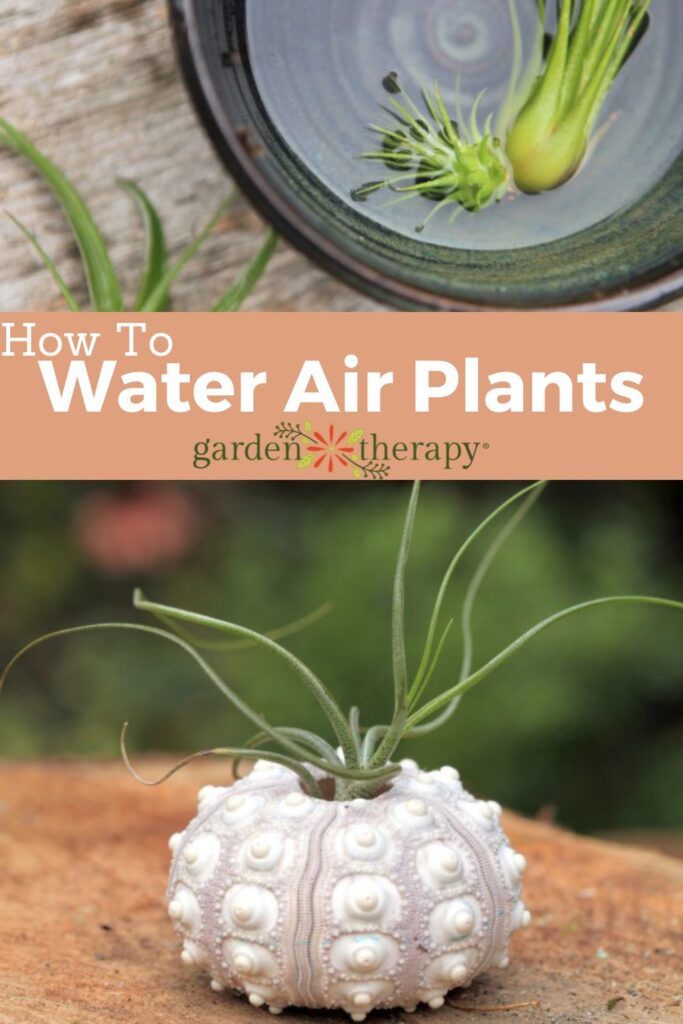Tillandsia, AKA air plants, are so much fun. They are completely unique to the plant world, requiring no soil to survive. But, they do require a different water routine in order to thrive. Follow these steps to water air plants the right way and keep them hydrated and happy all year long.
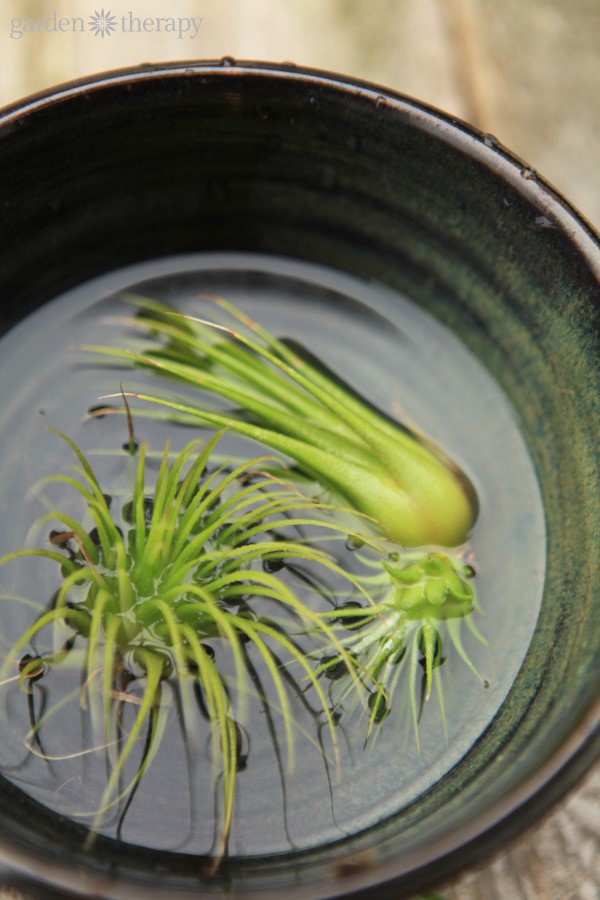
For even the most experienced gardeners and houseplant enthusiasts, air plants can remain an enigma. What do you mean they don’t require any soil!?
By far the biggest question new air plant owners have is how the heck do you water a plant that doesn’t have any soil.
While many people will recommend misting your air plant, I have a different method that will give your air plant the hydration it really needs. A bath!
This post will cover…
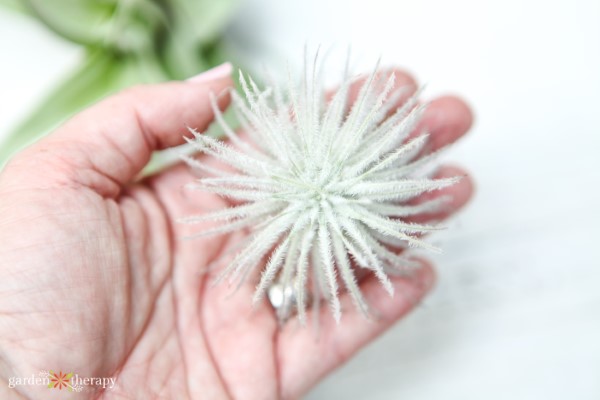

What’s in a Name?
Tillandsia gets their more common name, air plant, because they grow without soil in the air. One of the most common misconceptions about Tillandsia comes from their name and the idea that they only need air to survive.
However, it really means that they need to absorb moisture through their leaves consistently. This either comes from very high humidity (as in a greenhouse) or from regular soaking.
Their spiky tendrils are oh-so-cool looking, and because they don’t need soil to survive, there are endless creative ways to display them, from terrariums to popping them inside seashells. You can even make them into jewelry! They are hardy and easy to care for if you know what to do, and the most common problems that people have with air plants are due to incorrect watering.
When Tillandsia grow in the wild, they absorb moisture from the air, which is much more humid than it is indoors, and that is usually where we keep them, so we have to soak them to rehydrate. But it must be done properly or the air plant will rot!
How to Water Air Plants
Water your air plants in the morning to ensure they get enough time to fully dry, or it may disrupt their ability to respire at night.
To water air plants, remove them from wherever you have them displayed and submerge them in a bowl or sink full of enough water to completely cover them.
Parts of the plants will float up above the water—this is okay. Just make sure that the majority of each air plant is submerged in the water. Leave them in the bath for one hour.
Remove each plant, hold it facing upside down, and shake well to get rid of any excess water pooling at the base of the inner leaves. Then, turn your air plant upside down on a towel and place it in a bright spot.
Let it sit for one to three hours, depending on when it is fully dry. Ensure there is no water pooled or else your air plant may rot.
Return your air plants to their regular spot until it is time to bathe them again.
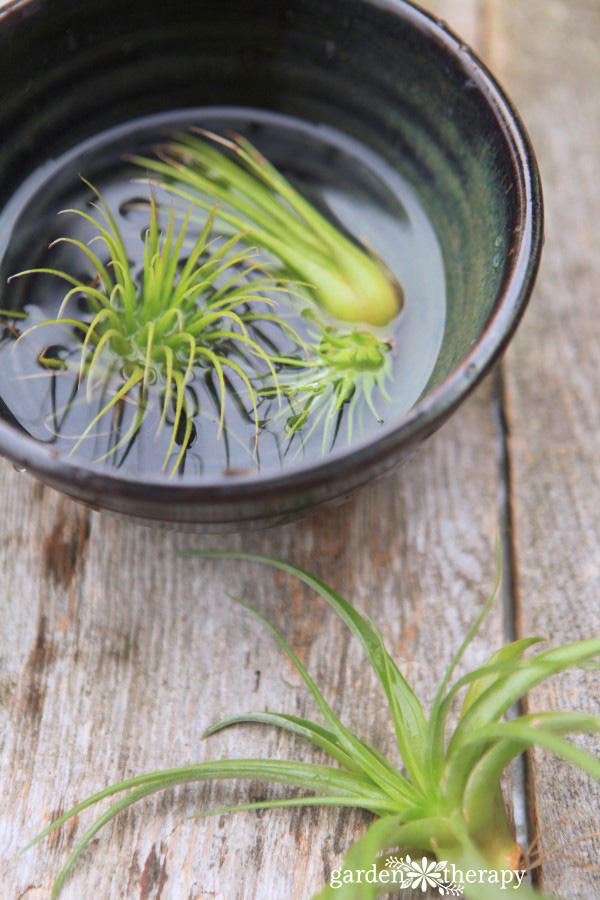

Use the Right Water
Don’t use chlorinated water for your air plants, as it can harm them. Instead, use rainwater or filtered water if possible. If you want to use tap water, allow it to sit out in a bowl for 24 hours first so that the chlorine evaporates. Chlorine can turn the tips of the leaves brown.
Change Your Watering Schedule Seasonally
Depending on the season, air plants need to be bathed at different frequencies. In the summer, when it is hot, they like to be bathed once a week, but in the cool winter months, once every three weeks or so will do. Pay attention to the changing of the seasons and the health of your air plant and water accordingly.
You will also want to note the location of your air plant. For example, how much light is your plant receiving? If it’s getting lots of sun, it may need to be watered more often.
Is your plant located next to a heater where it may dry out more quickly, or do you live somewhere humid where it will require less water? Take the time to evaluate the surroundings of your air plant when thinking about a watering schedule.
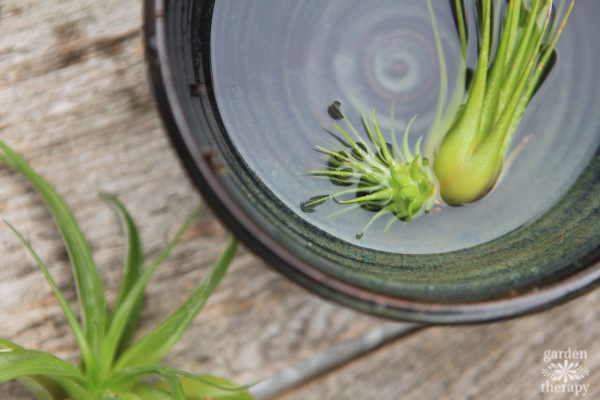

Should I Mist My Air Plants?
Many garden centers or plant stores will tell you to mist your air plant with water from a misting bottle a few times a week. Personally, I do not find this to be very helpful for the plant. Spritzing is just too inconsistent and doesn’t provide the air plant with enough moisture. Misting should not be the only method you use for watering your air plant.
That being said, greenhouses and garden centers just mist them because it is already humid inside a greenhouse. And if you live in a humid climate (or a greenhouse) you can also get away with spritzing them. For air plants adopted as houseplants for the rest of us, the key is soaking them in a bath.
If your air plant is stuck in a terrarium or glued somewhere and it cannot be removed, misting may be your only option. If this is the case, mist very often to ensure it gets as much water as possible without letting water sit in the base. However, I highly discourage placing air plants anywhere where they cannot be removed and bathed!
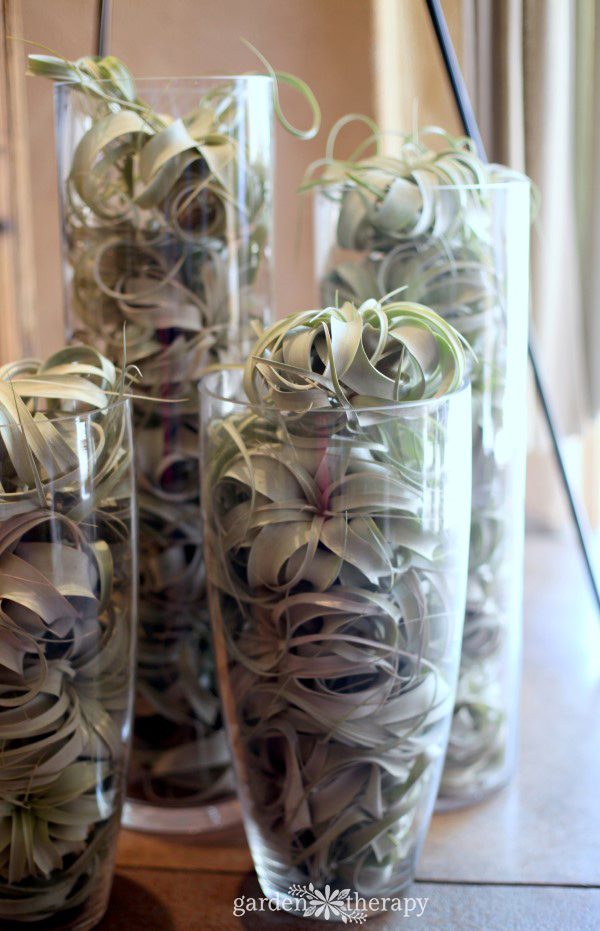

Signs of an Unhappy Air Plant
If your air plant is showing signs of distress, it could be due to watering. Crispy tips that are turning brown could be a sign of under-watering. You will also notice that the air plant’s concave shape is more noticeable when water is lacking.
Signs of over-watering, however, are tricky to undo. If the air plant is rapidly losing leaves and the base has turned black or brown, the air plant has gone rotten. Resist watering and cross your fingers! View my guide on how to revive a sick air plant for more information.
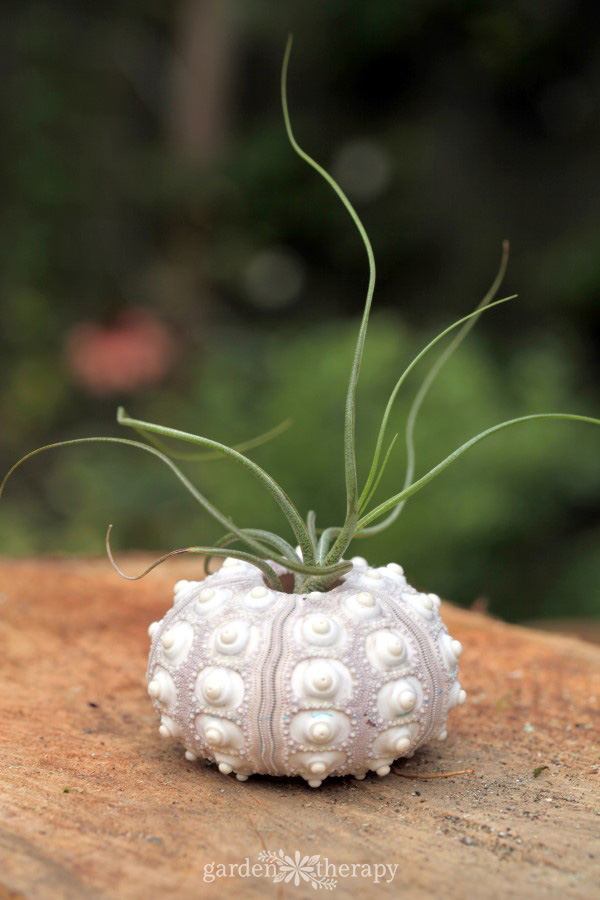

FAQ About Watering Air Plants
While soaking the air plants is the proper way to water, the most important part of the process is actually drying them. You want to water them in the morning, so you have all day to let them dry.
Shake off as much water as possible after watering. Then, tip them upside down and place them in a bright and sunny spot until they’re fully dry. I repeat, fully dry. One commenter advised laying it on a screen so the water can drip out underneath.
If it is dead, all the leaves will fall off, or it will turn brown and crunchy.
Avoid buying glued air plants. The glue is safe for air plants and won’t kill them, but it is certainly not the best option if you want to have long-living, healthy plants. I have purchased some gorgeous displays with air plants glued onto them, but I can never water them properly. It’s best to display them so they can be removed to be watered, such as this wire display or this living air plant wreath.
More Posts About Air Plants:


